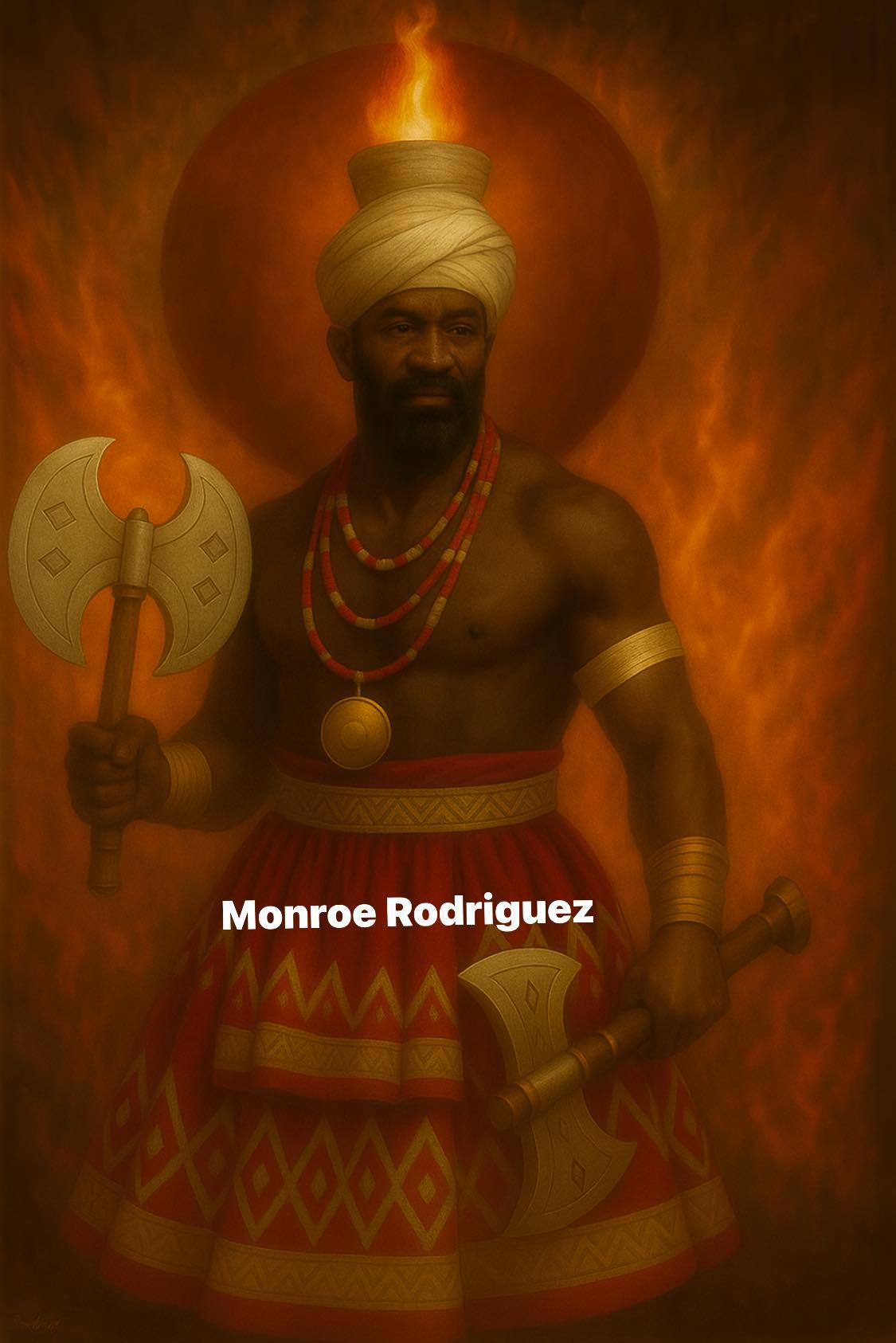
Ṣàngó: The Orisa of Thunder, Kingship, and Justice in Yoruba Religion
Within the cosmological framework of the Yoruba people, few Orisa are as widely revered and symbolically charged as Ṣàngó (also spelled Shango, Sango, or Xangô). As both a historical king and a deified force of nature, Ṣàngó’s mythology and cult practice illuminate profound themes of power, justice, creativity, and the dynamic interplay between the material and spiritual worlds.
Historical and Mythological Origins
Ṣàngó’s narrative bridges myth and history. Oral traditions identify him as the fourth Alaafin (king) of the ancient Oyo Empire—a charismatic and formidable ruler whose reign was marked by expansion, innovation, and, ultimately, controversy. Legends recount his supernatural command over lightning and thunder, attributes that elevated him to Orisa status after his death.
The deification of Ṣàngó reflects a broader Yoruba tradition wherein extraordinary individuals, upon their passing, are transformed into Orisa—spiritual archetypes whose influence shapes the destinies of both individuals and communities.
Attributes and Symbolism
Ṣàngó is most commonly associated with:
- Thunder and Lightning: As the Orisa of the sky’s most dramatic forces, Ṣàngó embodies raw energy, sudden transformation, and the assertion of divine will.
- Kingship and Authority: Ṣàngó is not merely a force of nature, but also the archetype of royal power, justice, and charismatic leadership. His iconography often features the double-headed axe (oshe), a symbol of decisive judgment and balanced force.
- Justice and Morality: Within the Yoruba ethical system, Ṣàngó is a relentless upholder of truth and fairness. His intervention is invoked in times of dispute, oath-taking, and when moral clarity is sought.
- Masculine Vitality and Creativity: Ṣàngó’s stories emphasize his passion, charisma, and complex relationships—especially with the Orisa Oya, Oba, and Osun—reflecting ideals of fertility, sexuality, and creative force.
Rituals, Worship, and Cultural Influence
The cult of Ṣàngó is characterized by:
- Vivid Ritual Performance: Devotees honor Ṣàngó with energetic drumming, dance, fire, and the rhythmic wielding of the oshe. The color red (and sometimes white) predominates in his regalia and offerings.
- Offerings: Ram, bitter kola, palm oil, yam, and various forms of alcohol are among the standard offerings, accompanied by songs and praise poetry (oriki).
- Priesthood and Initiation: Ṣàngó’s priests and priestesses (called babalorisa and iyalorisa in some regions, or elekó and alafin in others) undergo rigorous initiation, learning the mysteries of thunder, divination, and the balancing of justice.
Ṣàngó’s influence extends far beyond Yorubaland. In the Americas, his worship is central to Afro-Brazilian Candomblé (as Xangô), Cuban Lukumí (as Chango), and Trinidadian Spiritual Baptist traditions, among others. In each context, Ṣàngó becomes a symbol of Black resilience, social justice, and the survival of African spiritual heritage.
Theological and Social Lessons
The figure of Ṣàngó offers a series of interwoven lessons:
- The Double-Edged Nature of Power: Ṣàngó’s thunder can both destroy and protect; his reign is remembered for both triumph and excess. His myth cautions against hubris and reminds devotees of the need for balance.
- Charisma and Community: Ṣàngó’s charisma is never solitary; it is shaped by his relationships—with wives, devotees, rivals, and other Orisa—mirroring the interconnectedness at the heart of Yoruba ontology.
- Justice as Divine Mandate: The pursuit of justice, the redress of wrongs, and the defense of truth are not just social ideals, but divine imperatives enshrined in Ṣàngó’s person.
Conclusion
Ṣàngó is much more than a “god of thunder.” He is a living archetype of energy, kingship, and moral force—a reminder of the responsibilities that accompany both earthly and spiritual power. Through his worship and enduring stories, Ṣàngó continues to inspire seekers of justice, balance, and authentic self-expression.